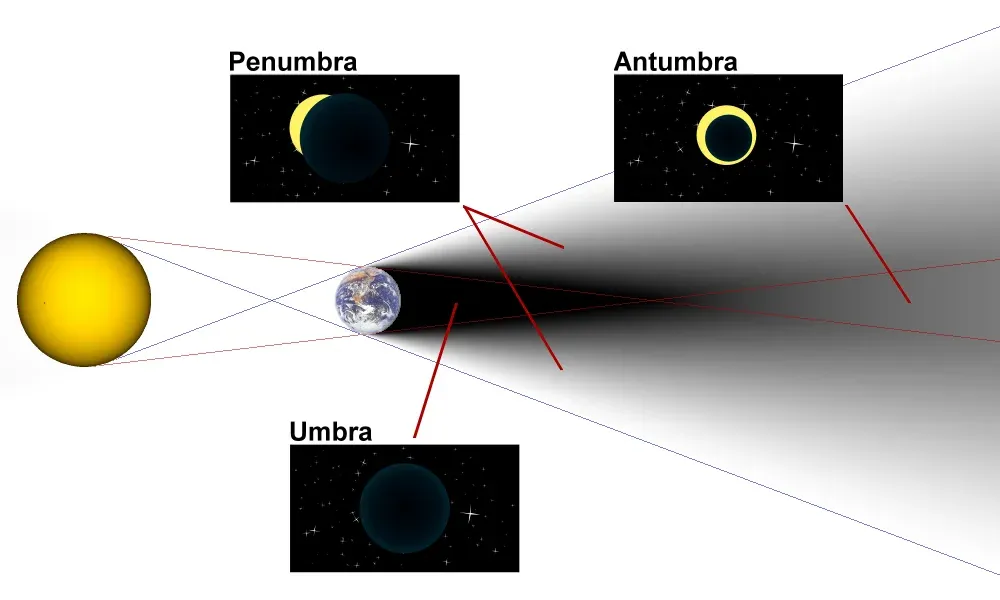Shadows
In this section we will implement basic shadow mapping which allows us to check if a pixel has a shadow cast on it.
The shadow Pass
The first thing we need to do is create two new files: shadow.vsh and shadow.fsh. They should be in the shaders folder, just like your other shader programs.
These compose the ‘shadow pass’, which runs before the gbuffers passes. It renders the scene from the perspective of the sun (or moon), storing depth and color information which we can use for shadow mapping.
The shadow programs can actually be pretty much copies of your gbuffers_terrain programs. They will function the same, however less info needs to be passed through, so if you want, you can delete the extra in and out declarations we aren’t using. The only ones we need are texcoord and glcolor.
#version 330 compatibility
out vec2 texcoord;out vec4 glcolor;
void main() { texcoord = (gl_TextureMatrix[0] * gl_MultiTexCoord0).xy; glcolor = gl_Color; gl_Position = ftransform();}#version 330 compatibility
uniform sampler2D gtexture;
in vec2 texcoord;in vec4 glcolor;
layout(location = 0) out vec4 color;
void main() { color = texture(gtexture, texcoord) * glcolor; if(color.a < 0.1){ discard; }}This is actually all we need to get Iris rendering a shadow map. Let’s now go back to our composite pass.
Reading the Shadow Map
The shadow map is accessable as shadowtex0, so let’s add this as a sampler2D.
uniform sampler2D shadowtex0;First, to make sure things are working properly, let’s render the shadow map to the screen.
color.rgb = texture(shadowtex0, texcoord).rgb;You should see something like this:
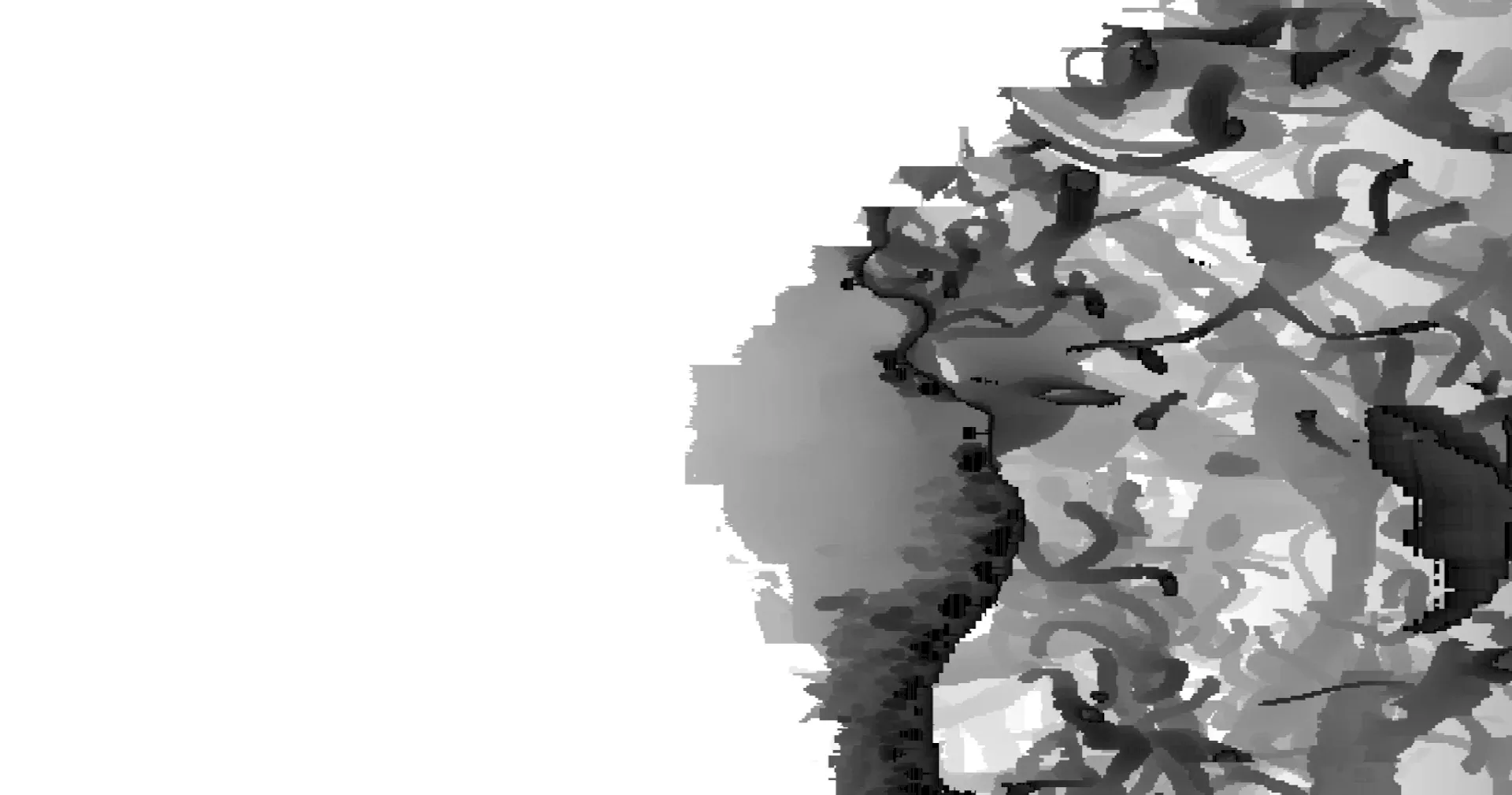
This may not make much sense to look at, but this shows how far away the nearest thing the sun can see is.
Getting the Position in Shadow Space
To check if a pixel is shadowed, we need to know where in the shadow map it is. We can do this by transforming the position of the pixel into shadow space. We will need the following transformation matrices:
uniform mat4 gbufferProjectionInverse;uniform mat4 gbufferModelViewInverse;uniform mat4 shadowModelView;uniform mat4 shadowProjection;To do this, we first need to determine the position of the pixel at all. We can do this using the screen texture coordinate, as well as the depth. For more information on these space conversions, see Coordinate Spaces.
To do these space conversions, we will make use of a function, projectAndDivide. This function applies a projection matrix and then divides by the w component, skipping clip space. Place this function definition outside and before main but after the declaration of texcoord.
vec3 projectAndDivide(mat4 projectionMatrix, vec3 position){ vec4 homPos = projectionMatrix * vec4(position, 1.0); return homPos.xyz / homPos.w;}Then, for our space conversion:
vec3 NDCPos = vec3(texcoord.xy, depth) * 2.0 - 1.0;vec3 viewPos = projectAndDivide(gbufferProjectionInverse, NDCPos);vec3 feetPlayerPos = (gbufferModelViewInverse * vec4(viewPos, 1.0)).xyz;vec3 shadowViewPos = (shadowModelView * vec4(feetPlayerPos, 1.0)).xyz;vec4 shadowClipPos = shadowProjection * vec4(shadowViewPos, 1.0);vec3 shadowNDCPos = shadowClipPos.xyz / shadowClipPos.w;vec3 shadowScreenPos = shadowNDCPos * 0.5 + 0.5;We can then sample the shadow map at shadowScreenPos.
Sampling the Shadow Map
So, the shadow map contains the depth of the nearest thing to the light source in that direction. Therefore, if something is further away from the sun, it must be in shadow. What we do is compare the depth in the shadow map at our shadow position’s xy component to the z component of our shadow position. If the z component is not greater than the depth, it must be in sunlight. We can do this comparison with the step function. Let’s say we have step(a, b). It returns 1.0 if b is more than a. With that in mind, we can declare:
float shadow = step(shadowScreenPos.z, texture(shadowtex0, shadowScreenPos.xy).r);We can then replace our multiplication by lightmap.g with one by shadow.
vec3 sunlight = sunlightColor * dot(normal, worldLightVector) * shadow;You should now see something like this:
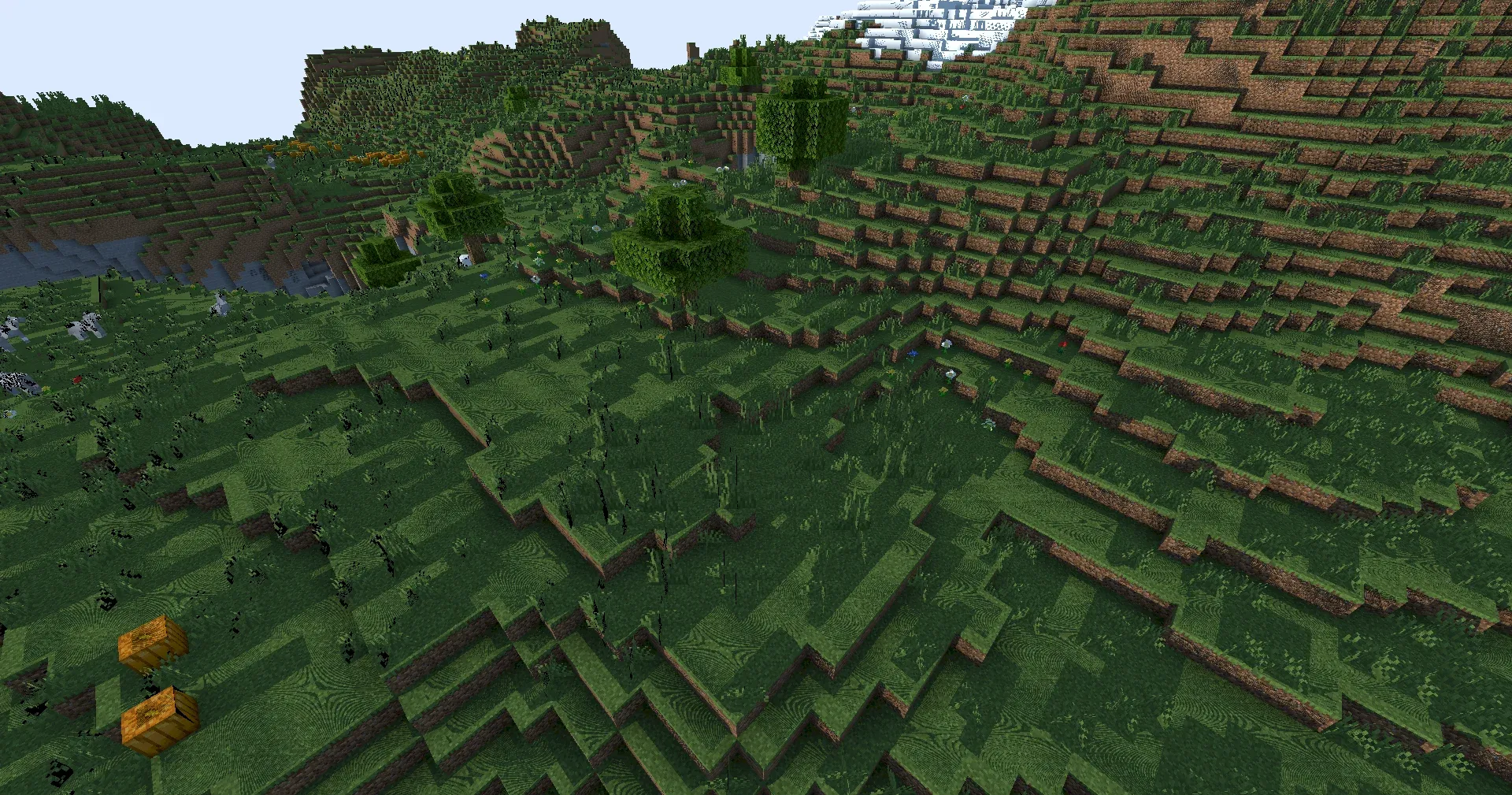
Now, while you can tell that things are casting shadows, a lot of surfaces seem to be in shadow when they shouldn’t be, with weird patterns. This is due to something called ‘shadow acne’, and it occurs when something ends up casting a shadow on itself due to the lack of precision in the shadow map. We can fix this by adding something known as ‘shadow bias’ where we offset surfaces slightly towards the sun to prevent them casting shadows on themselves:
[...]vec4 shadowClipPos = shadowProjection * vec4(shadowViewPos, 1.0);shadowClipPos.z -= 0.001;vec3 shadowNDCPos = shadowClipPos.xyz / shadowClipPos.w;[...]Your shadows should now look a lot more reasonable.
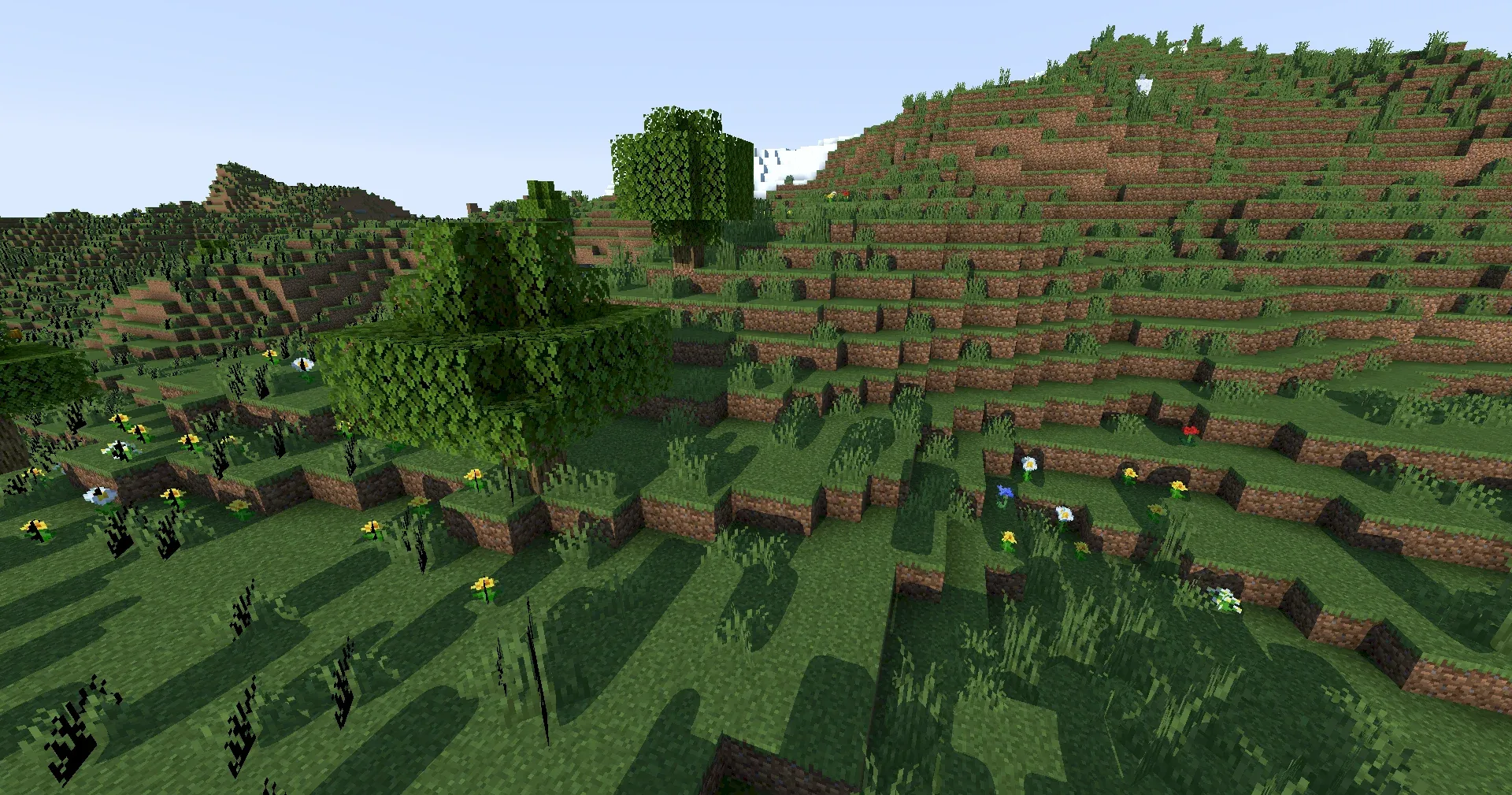
Making Shadows Sharper
At the moment, our shadows are extremely blocky. This is due to the limited resolution of the shadow map. We can improve things somewhat by increasing this, using the shadowMapResolution const. This constant can be defined anywhere, but just because it’s a nice place to put it, we’ll go back to shadow.fsh. Let’s add the following. It should be outside the main function - I put mine just before my layout qualifier declaration.
const int shadowMapResolution = 2048;This makes things a little bit sharper, but they still don’t look great.
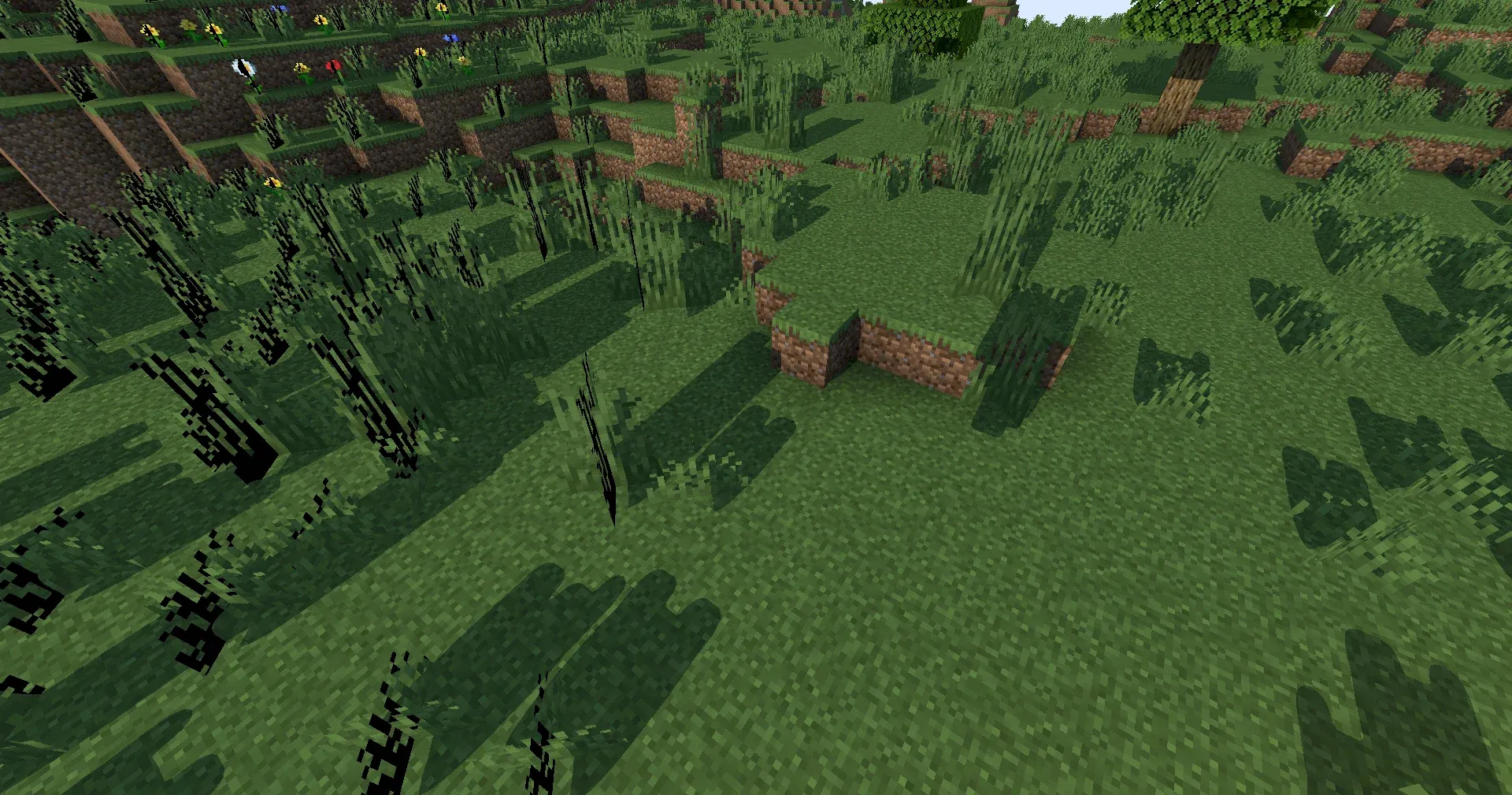
The easy solution here would be to just increase the shadow map resolution to some very big number like 8192 (it is convention to use a power of two for your shadow map size), but this will start taking up an awful lot of video memory, causing a performance impact. Instead, we can make use of something known as ‘shadow distortion’. The idea is that since stuff that is closer to us is what we can see most clearly, we want to dedicate more of the shadow map resolution to this stuff, and less of it to things that are further away.
Shadow Distortion
For our shadow distortion, we want to scale things to make stuff closer to the player occupy more space in the shadow map, squashing the stuff that’s further away towards the edges. We are going to do this operation in shadow clip space. Let’s make a new function which takes in a position in shadow screen space, distorts it, and returns it. We want to access this function within both shadow.vsh and composite.fsh, so we are going to make use of a GLSL feature called #include. This lets us include code from one file inside multiple other files.
Let’s make a new file called distort.glsl. We’ll put it in a folder called lib for the sake of organisation.
.└── shaders/ ├── lib/ │ └── distort.glsl ├── composite.fsh └── ...We can then add
#include /lib/distort.glslto our shadow.vsh. *This should be included before the main function, as you cannot define functions within a function. I put mine just before my out declarations.
We should also move our declaration of shadowmapresolution to distort.glsl. This way, we can access this variable anywhere we are sampling the shadow map.
Within distort.glsl, let’s write a function distortShadowClipPos. This function is the one we described earlier.
So, how do we actually distort the position? Well, in shadow clip space, all positions are between -1.0 and 1.0. Now, as the distance from the position to the origin (where the player is) increases, we want to make that distance even greater by pushing it closer to the edge. What we can do is divide the position by the distance to the origin.
vec3 distortShadowClipPos(vec3 shadowClipPos){ float distortionFactor = length(shadowClipPos.xy); // distance from the player in shadow clip space distortionFactor += 0.1; // very small distances can cause issues so we add this to slightly reduce the distortion
shadowClipPos.xy /= distortionFactor; shadowClipPos.z *= 0.5; // increases shadow distance on the Z axis, which helps when the sun is very low in the sky return shadowClipPos;}We now need to apply that distortion. Back in shadow.vsh, gl_Position is in clip space, so we can simply apply it to the xyz component.
void main(){ [...] gl_Position = ftransform(); gl_Position.xyz = distortShadowClipPos(gl_Position.xyz);}At this point, let’s write the shadow map to the screen again to check what it looks like now. We did this earlier on, so I’ll not give you the code again.
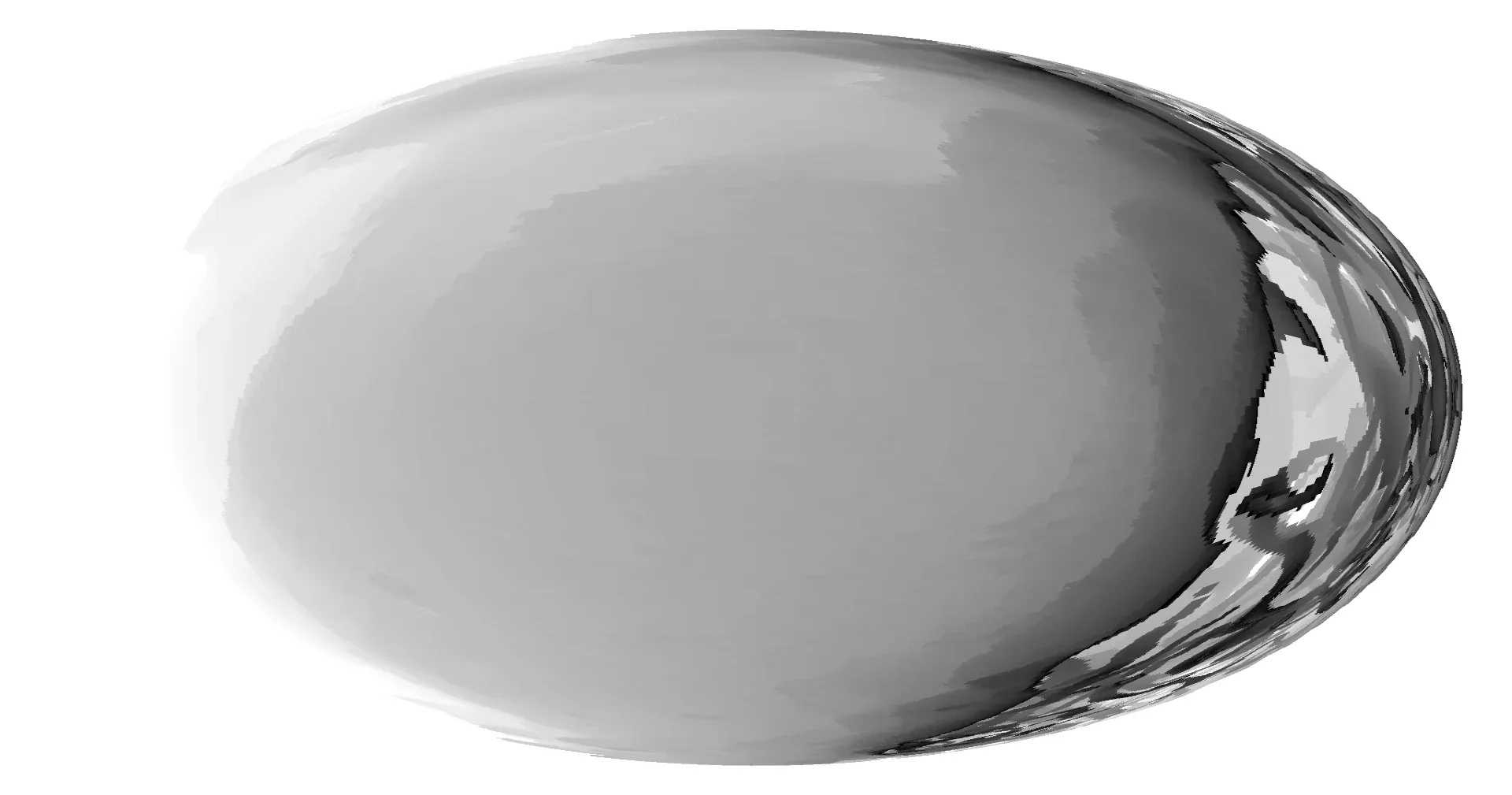
As expected, stuff in the middle of the shadow map has been expanded to take up more space!
To apply this distortion when sampling the shadow map, we will #include /lib/distort.glsl in composite.fsh, and then apply the distortion to our shadow clip position after the bias.
[...]vec4 shadowClipPos = shadowProjection * vec4(shadowViewPos, 1.0);shadowClipPos.z -= 0.001; // biasshadowClipPos.xyz = distortShadowClipPos(shadowClipPos.xyz); // distortionvec3 shadowNDCPos = shadowClipPos.xyz / shadowClipPos.w;[...]Our shadows now look nice and sharp near the player!
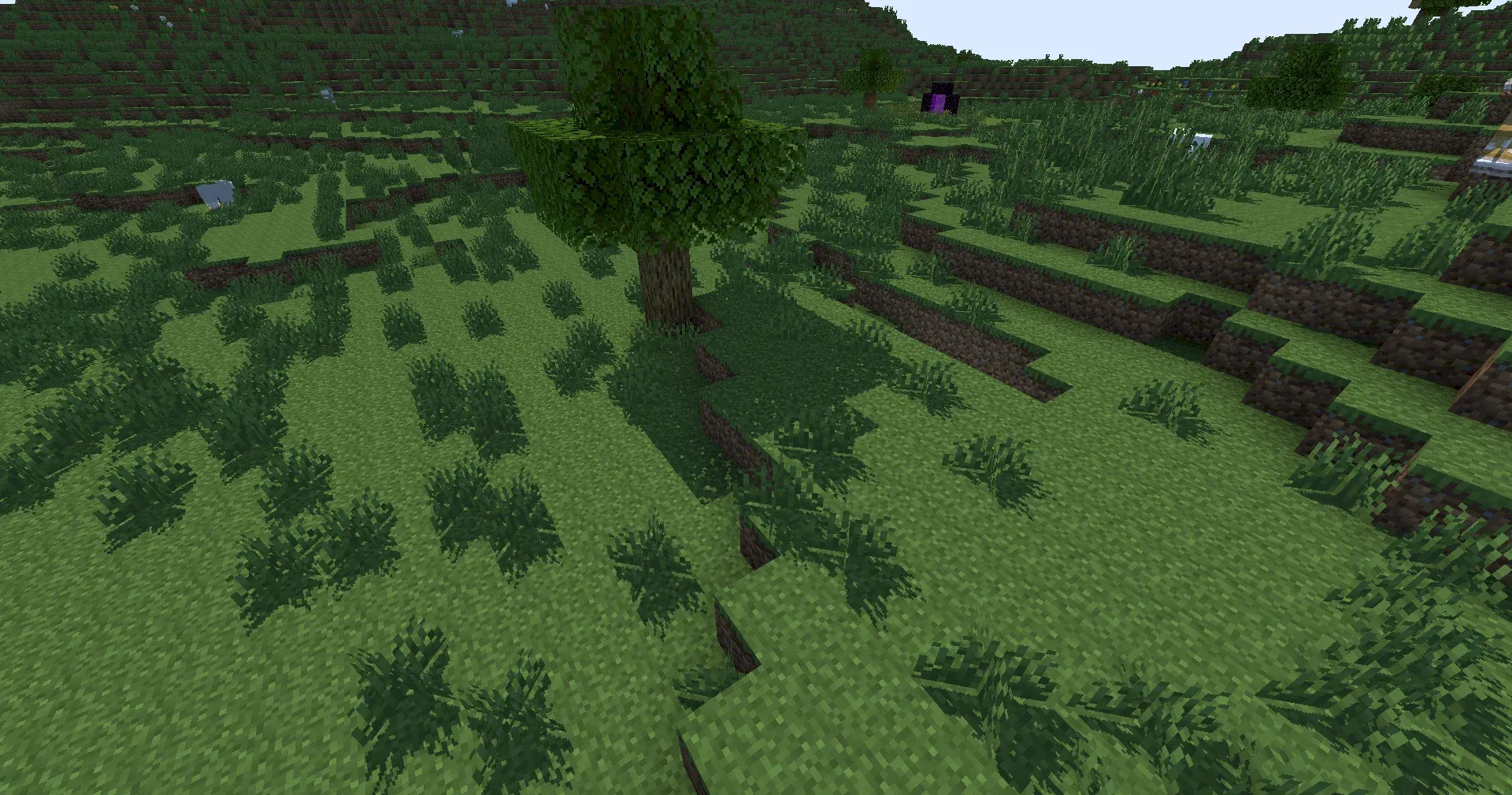
Transparent Shadows
If you look at something like stained glass, you’ll see that it casts a solid shadow. This doesn’t really make sense, since (it being partially translucent) it should be letting some light through. Handily, there are a couple of extra shadowmaps we can access to help us with this.
shadowtex0contains everything that casts a shadowshadowtex1contains only things which are fully opaque and cast a shadowshadowcolor0contains the color (including how transparent it is) of things which cast a shadow.
We will of course need to add these other two shadow maps as uniform declarations alongside shadowtex0.
With these three shadow maps, we can work out how much shadow is being cast by something, and even what color that shadow should be!
Let’s go back to composite.fsh and make a new function called getShadow. It should take in a shadowScreenPos which is of course a vec3. As The logic we will use is as follows:
vec3 getShadow(vec3 shadowScreenPos){ float transparentShadow = step(shadowScreenPos.z, texture(shadowtex0, shadowScreenPos.xy).r); // sample the shadow map containing everything
// note that a value of 1.0 means 100% of sunlight is getting through, not that there is 100% shadowing
if(transparentShadow == 1.0){ // since this shadow map contains everything, there is no shadow at all so we return full sunlight return vec3(1.0); }
float opaqueShadow = step(shadowScreenPos.z, texture(shadowtex1, shadowScreenPos.xy).r); // sample the shadow map containing only opaque stuff
if(opaqueShadow == 0.0){ // there is a shadow cast by something opaque, so we return no sunlight return vec3(0.0); }
vec4 shadowColor = texture(shadowcolor0, shadowScreenPos.xy); // contains the color and alpha (transparency) of the thing casting a shadow
return shadowColor.rgb * (1.0 - shadowColor.a); // we use 1 - the alpha to get how much light is let through and multiply that light by the color of the caster}We can then replace our original
float shadow = step(shadowScreenPos.z, texture(shadowtex0, shadowScreenPos.xy).r);with
vec3 shadow = getShadow(shadowScreenPos);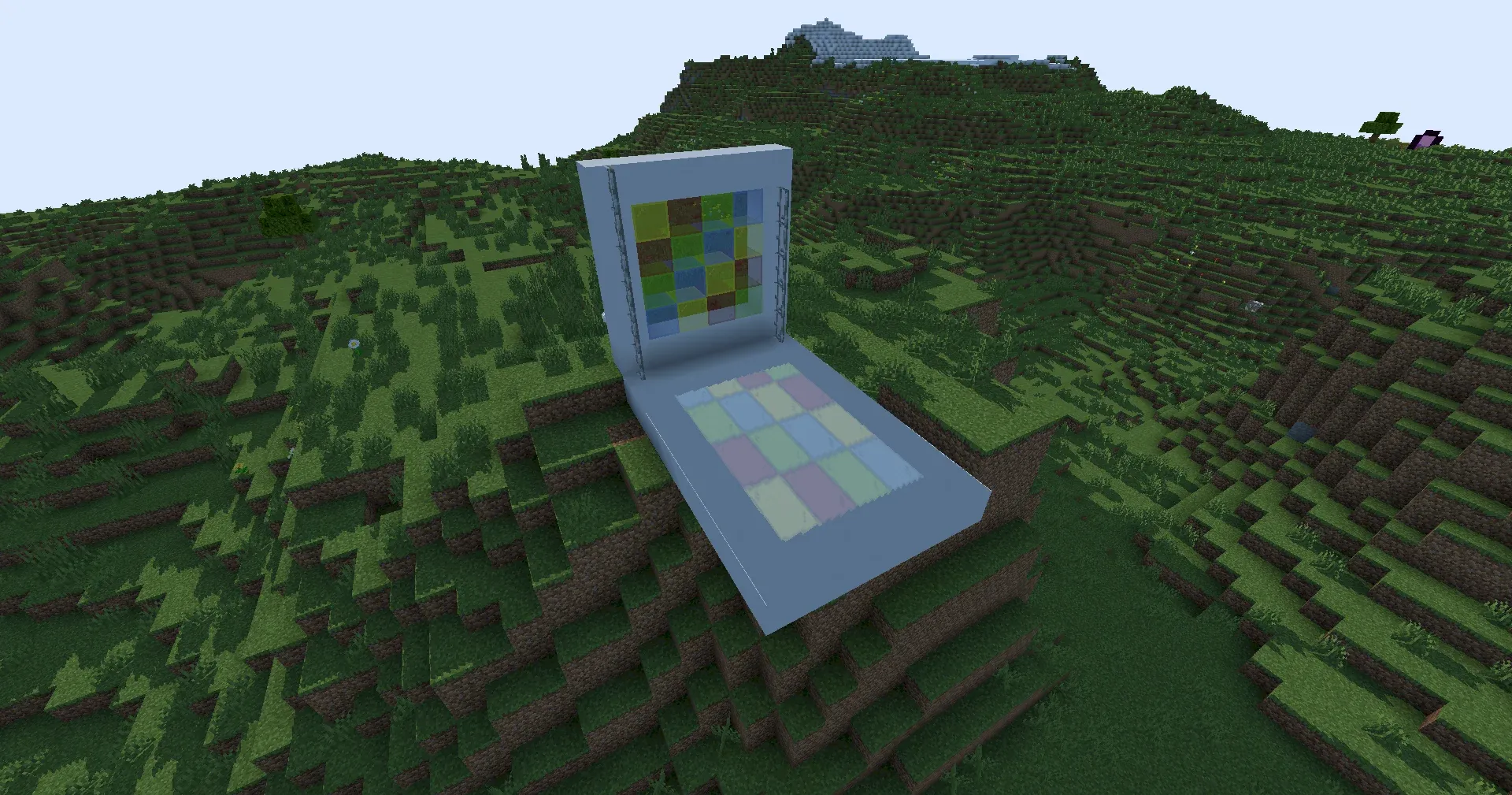
and we now get nice colored shadows!
Softer Shadows
The final piece of the puzzle is those nasty jagged edges on our shadows. This is called aliasing, and is another artifact of the limited resolution on our shadow map. If you look at real shadows, you’ll also notice that they don’t tend to have clean, sharp edges. Instead, they seem to have a slightly softer edge. This area at the edge of the shadow is known as the penumbra.
What this means is that we can blur our shadows slightly, and not only will it remove the aliasing, it will also make them more physically plausible.
The first thing we are going to do is add the following to distort.glsl, just after we set the resolution.
const bool shadowtex0Nearest = true;const bool shadowtex1Nearest = true;const bool shadowcolor0Nearest = true;This will remove the curved edges on the shadows, making them even more jagged, but it’s necessary for us to be able to correctly blur them, and also resolves some artifacts on transparent shadows you may have noticed.
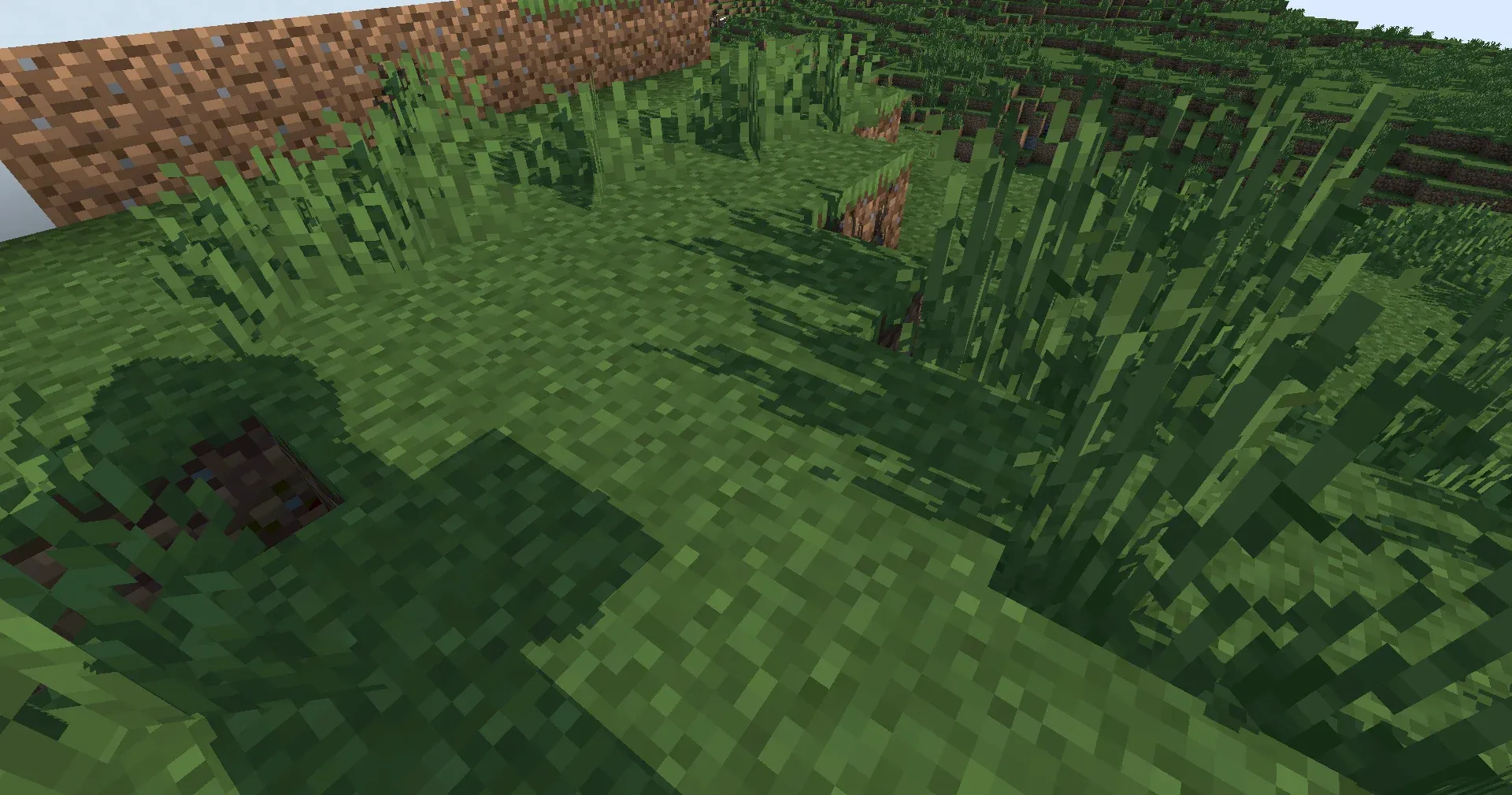
To blur our shadows, we are going to be using something known as percentage closer filtering. To do this, we take multiple shadow samples within an area around the position and average them. To do this, we will be using a loop. Within this loop, we will generate an offset from the shadow position, apply it in clip space, and then convert to screen space before our shadow samples.
First, we should define how many samples we are going to take, and how far we should offset our samples. We can do this with a preprocessor directive which we can later make configurable in the settings menu.
#define SHADOW_QUALITY 2#define SHADOW_SOFTNESS 1Let’s define another function getSoftShadow in composite.fsh. This function will call getShadow so it must be placed after it.
vec3 getSoftShadow(vec4 shadowClipPos){ const float range = SHADOW_SOFTNESS / 2; // how far away from the original position we take our samples from const float increment = range / SHADOW_QUALITY; // distance between each sample
vec3 shadowAccum = vec3(0.0); // sum of all shadow samples int samples = 0;
for(float x = -range; x <= range; x += increment){ for (float y = -range; y <= range; y+= increment){ vec2 offset = vec2(x, y) / shadowMapResolution; // we divide by the resolution so our offset is in terms of pixels vec4 offsetShadowClipPos = shadowClipPos + vec4(offset, 0.0, 0.0); // add offset offsetShadowClipPos.z -= 0.001; // apply bias offsetShadowClipPos.xyz = distortShadowClipPos(offsetShadowClipPos.xyz); // apply distortion vec3 shadowNDCPos = offsetShadowClipPos.xyz / offsetShadowClipPos.w; // convert to NDC space vec3 shadowScreenPos = shadowNDCPos * 0.5 + 0.5; // convert to screen space shadowAccum += getShadow(shadowScreenPos); // take shadow sample samples++; } }
return shadowAccum / float(samples); // divide sum by count, getting average shadow}We can then remove some of our conversion code and replace our call to getShadow with a call to softShadow.
[...]vec4 shadowClipPos = shadowProjection * vec4(shadowViewPos, 1.0);
// note how subsequent conversion code has been moved to the getSoftShadow function
vec3 shadow = getSoftShadow(shadowClipPos);[...]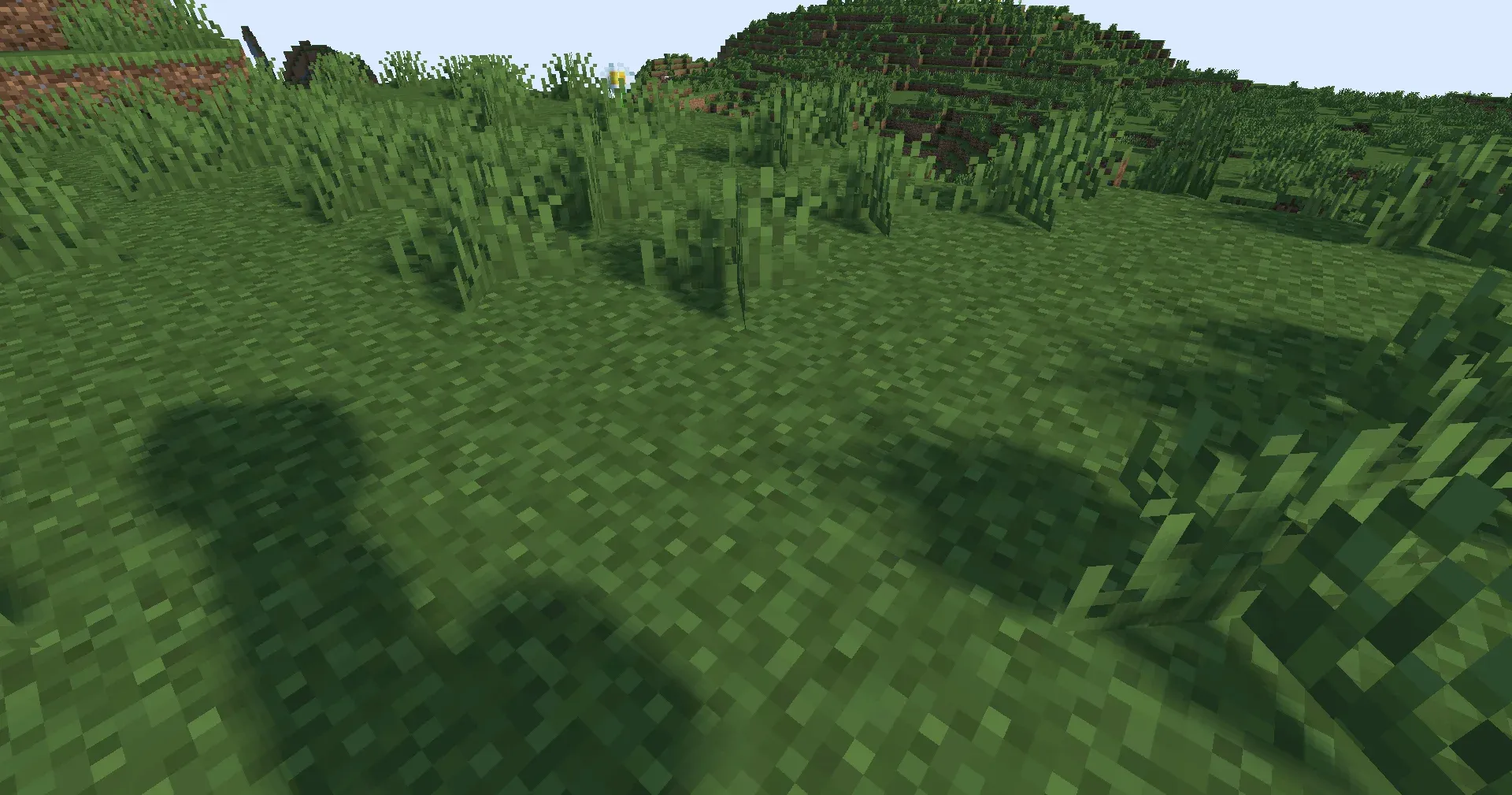
Our shadows now have soft edges, and the aliasing artifacts are no longer visible. However, they still look a little bit pixelated. This is for two reasons. The first one is that we are using a box kernel, which means that we are sampling evenly within a square box. Ideally, a circular kernel would be used, however implementing this is left as an exercise to the reader. The second, more important reason is that we are sampling the exact same points for every pixel on screen. We can resolve this issue by randomly rotating the area we sample within for each frame. We can get a random rotation using another texture, noisetex. Let’s write noisetex to the screen. I’m once again leaving this up to you to do, because we’ve written a fair few textures to the screen at this point. Like every other texture, noisetex is declared with a uniform sampler2D noisetex;.
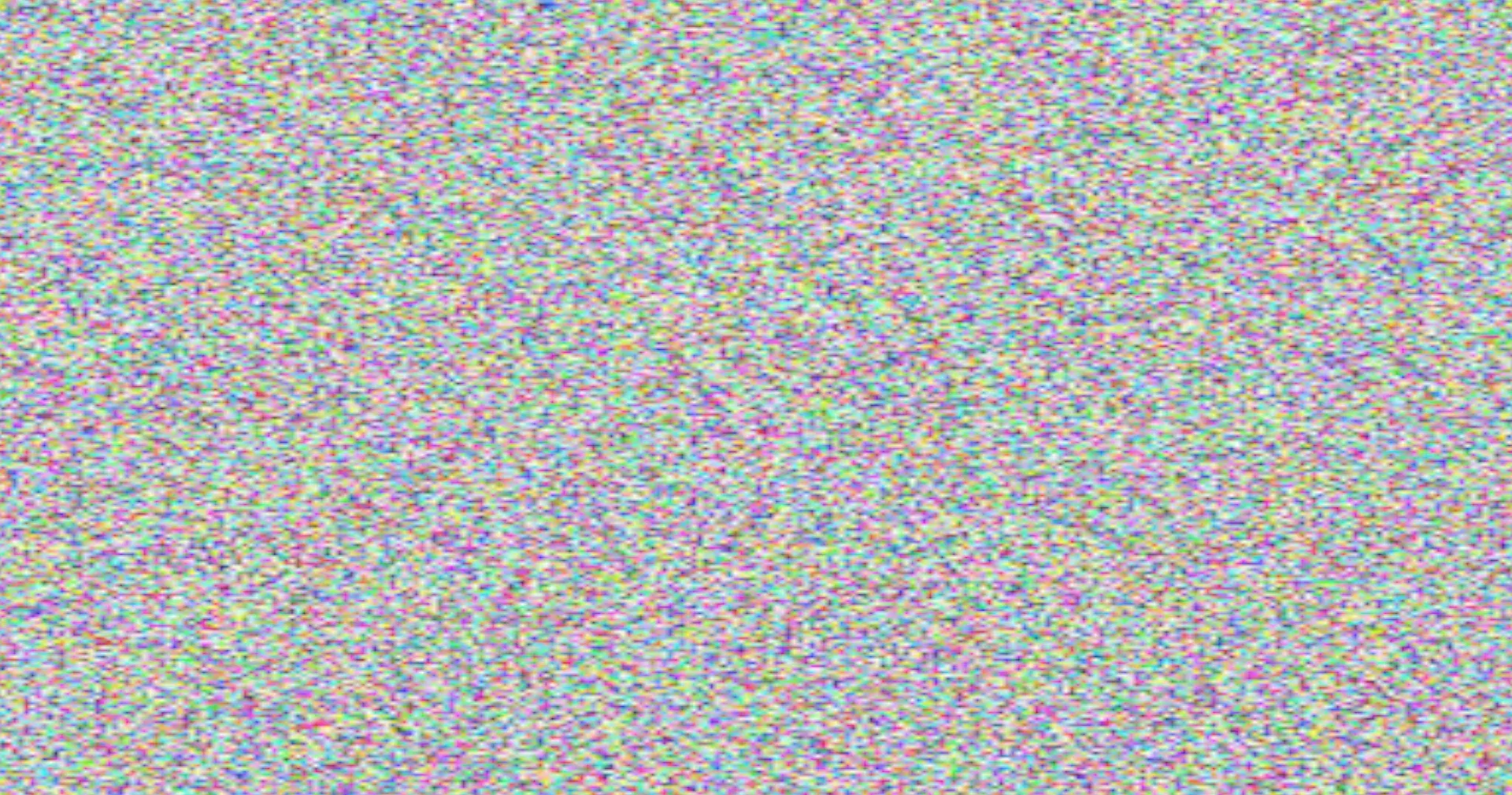
You’ll see the pixels in noisetex are pretty chunky. This is because it has a resolution of 64x64, and is being stretched to fit the screen. We could just increase the resolution, but to ensure we’re getting a unique value for every pixel, we’ll instead use a function called texelFetch. texelFetch takes in an exact pixel coordinate in a texture and returns the value there without doing any filtering. We will need to convert our texcoord to a pixel coordinate within the range (0-64). We can do this using another couple of uniforms, viewWidth and viewHeight (both floats). We will also make use of the type ivec2 which is like a vec2 except it can store only integer values. Let’s make another new function called getNoise. It will take in a vec2 texcoord and return a vec4, the lookup value from noisetex. We’re going to access it in getSoftShadow so it should be placed before this function.
vec4 getNoise(vec2 coord){ ivec2 screenCoord = ivec2(coord * vec2(viewWidth, viewHeight)); // exact pixel coordinate onscreen ivec2 noiseCoord = screenCoord % 64; // wrap to range of noiseTextureResolution return texelFetch(noisetex, noiseCoord, 0);}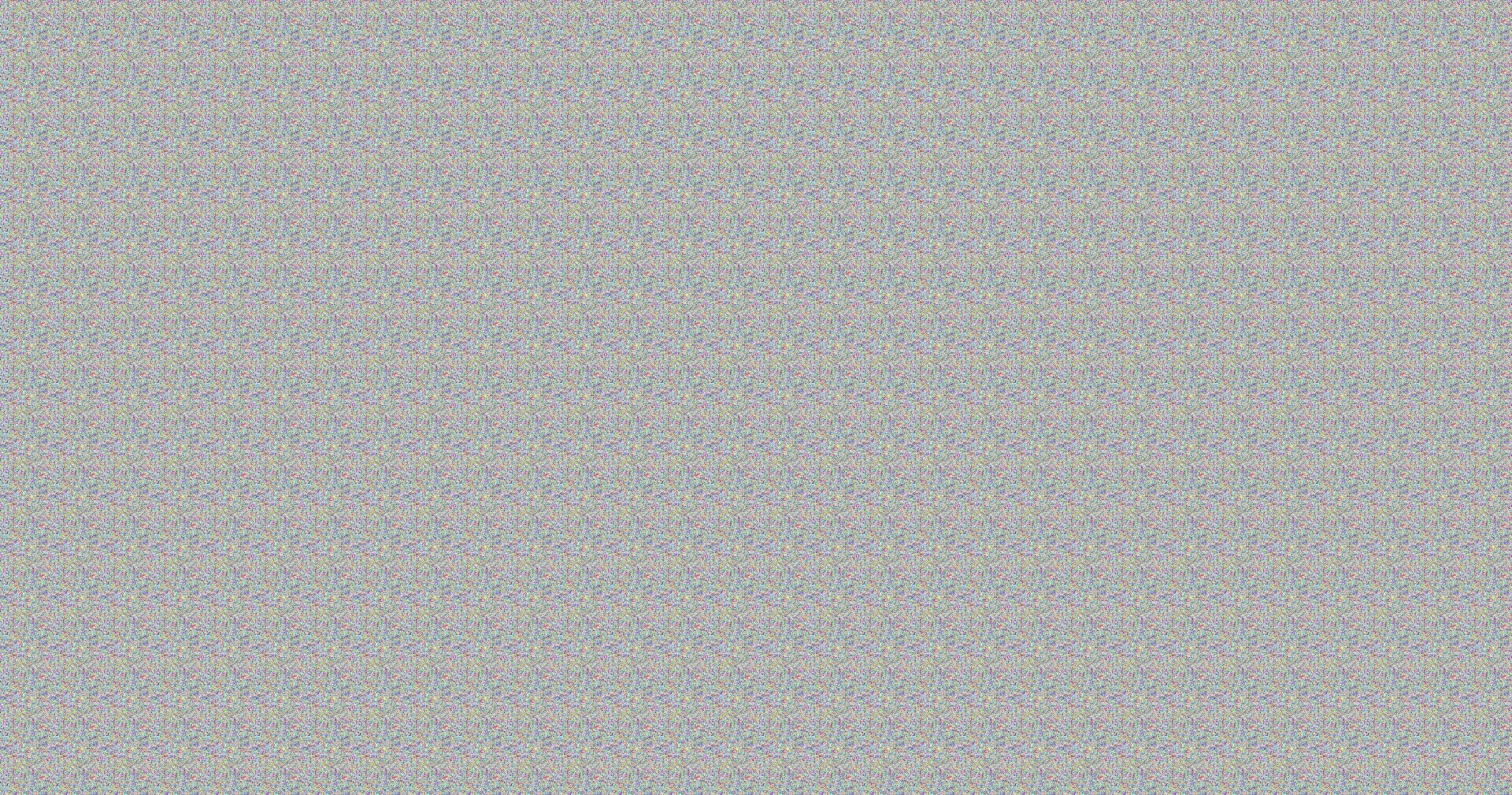
While the image clearly repeats, we now have unique values per pixel for the noise. We can then modify our softShadow function to take this into account.
vec3 getSoftShadow(vec4 shadowClipPos){ const float range = SHADOW_SOFTNESS / 2; // how far away from the original position we take our samples from const float increment = range / SHADOW_QUALITY; // distance between each sample
float noise = getNoise(texcoord).r;
float theta = noise * radians(360.0); // random angle using noise value float cosTheta = cos(theta); float sinTheta = sin(theta);
mat2 rotation = mat2(cosTheta, -sinTheta, sinTheta, cosTheta); // matrix to rotate the offset around the original position by the angle
vec3 shadowAccum = vec3(0.0); // sum of all shadow samples int samples = 0;
for(float x = -range; x <= range; x += increment){ for (float y = -range; y <= range; y+= increment){ vec2 offset = rotation * vec2(x, y) / shadowMapResolution; // offset in the rotated direction by the specified amount. We divide by the resolution so our offset is in terms of pixels vec4 offsetShadowClipPos = shadowClipPos + vec4(offset, 0.0, 0.0); // add offset offsetShadowClipPos.z -= 0.001; // apply bias offsetShadowClipPos.xyz = distortShadowClipPos(offsetShadowClipPos.xyz); // apply distortion vec3 shadowNDCPos = offsetShadowClipPos.xyz / offsetShadowClipPos.w; // convert to NDC space vec3 shadowScreenPos = shadowNDCPos * 0.5 + 0.5; // convert to screen space shadowAccum += getShadow(shadowScreenPos); // take shadow sample samples++; } }
return shadowAccum / float(samples); // divide sum by count, getting average shadow}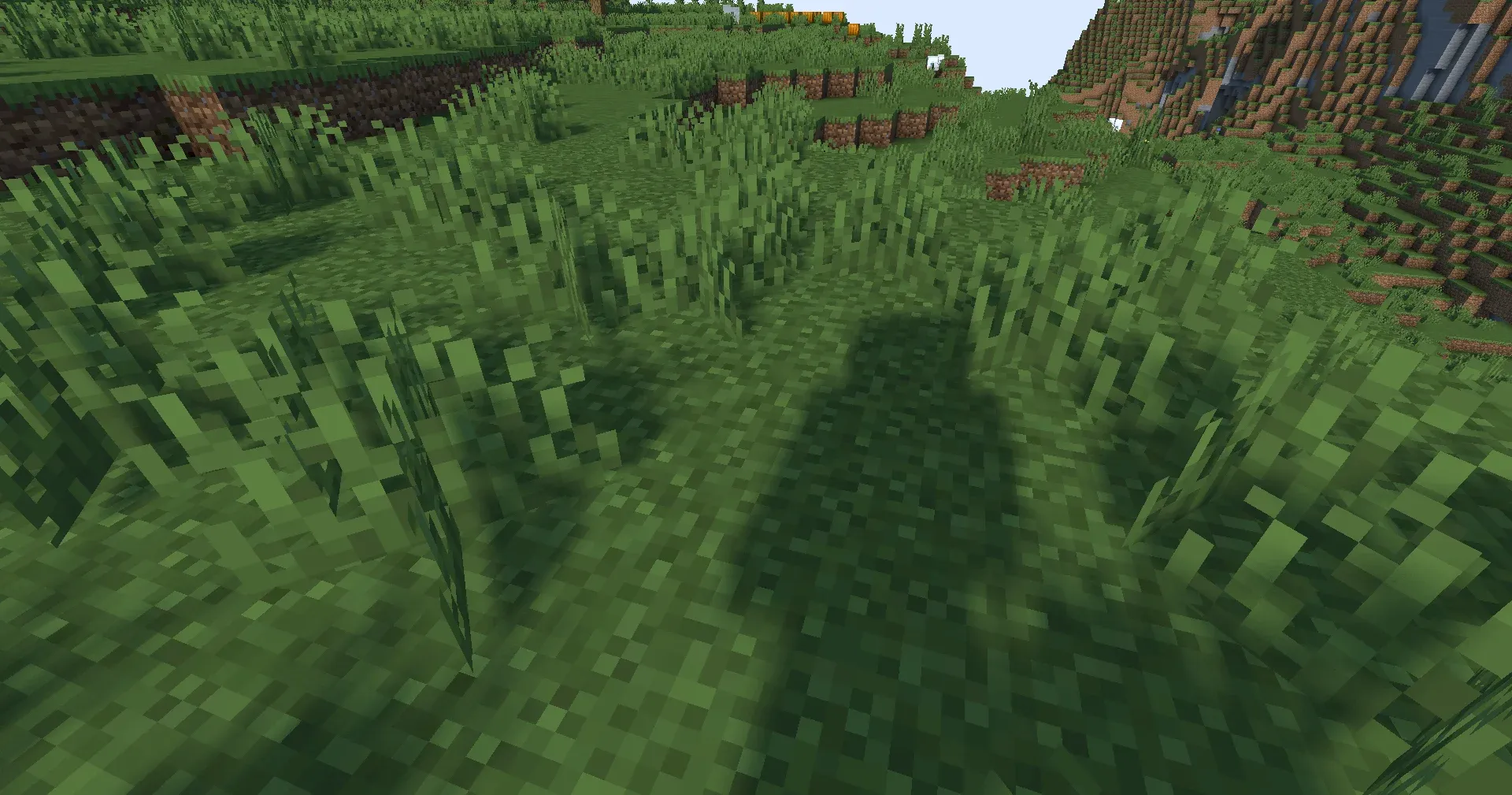
Our shadows no longer have any visible pixels!

